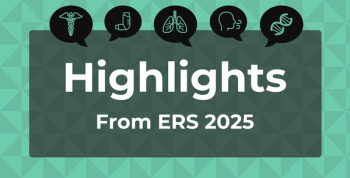
Proactive MG Management Hinges on Better Coverage and Guidelines
Ratna Kiran Bhavaraju-Sanka, MD, and Beth Stein, MD, advocate for improved proactive management of myasthenia gravis (MG) for better patient outcomes.
Ensuring broad access to new
They further emphasize that successful long-term MG management hinges on a close
This transcript was lightly edited for clarity.
The American Journal of Managed Care® (AJMC®): What are key considerations for ensuring access to MG treatments?
Stein: I think what's really important is the advent of new guidelines and clinical trials indicating their need. Once a treatment is indicated and we show that it works, we'll be able to get more improved insurance coverage for these patients in order to attain these targeted therapies. Without appropriate guidelines, without that appropriate research that's showing that there is benefit to these patients, we're unable to meet the needs of the patients and get these costly therapies.
As we move more from this paradigm of escalation therapy to more proactive disease management within the guidelines, we'll have improved
Also, if we move toward more upstream medications, if we can lead to better control earlier, although it may seem like a huge burden initially with the treatment, ultimately they'll need less medication over a longer period of time, and therefore maybe the ultimate burden on the financials on the health care system would be less.
Bhavaraju-Sanka: I agree with Dr. Stein that we need better guidelines. A lot of the insurance organizations and payers are looking at our trials. It's also important to include
We need to also include advocacy, advocacy at the level of legislature that you can be doing tiered therapies. There are certain patients who respond to certain therapies, and they don't need to fail a certain therapy to be able to get the medication that we believe, as their physicians, works for them. I think it's important to do advocacy and education and be super inclusive with our trials of different patient populations.
Then, to add on, sometimes, although these therapies can be financially burdensome early on, there are long-term benefits, and [of] the economics, we are putting patients or people into the workforce. We are making them more breadwinners. We are making them take care of their families, not get admitted to the hospitals for crisis or not have the chronic complications of some of the conventional therapies, and not getting
AJMC: How should long-term patient management be tailored to different drug mechanisms of action?
Stein: I think it's really important to develop a very close relationship with your patient in order to monitor specific responses to medication and their long-term benefits and then adjust their medications based on their responses. You’re only able to do that by creating close relationships with your patients, [and] consistent, ongoing care both via telephone/telemedicine and in-person visits. That's the only way to address long-term strategies for monitoring patients and adverse events that occur. Not only looking at the clinical trials, but in real-world practice, the only way to do that is by developing close relationships with your patients, active relationships with your patients, where everybody's involved: the patient, the patient’s caregiver, and the health care provider.
Bhavaraju-Sanka: Also, different therapies work differently, as their mechanisms of action are different. We need to look at the effects of these medications all through the course of their action. Some of the neonatal Fc receptors, they reduce your immunoglobulin G [IgG]. How much does that impact patients with their different molecules? Not only pathogenic, but other important IgGs can be lowered. Does that increase the risk of infections? Do they have comorbidities that we cannot use these? Are they immunodeficient? Can they cause more symptoms?
With complement inhibitors, we've seen that vaccination is really important because the complement is important for prevention of certain diseases and infections. We need to be proactive and continue monitoring them and educate the patient of what to be looking forward to and what to report to us, because a lot of times, it's a 2-way street.
We need to monitor for these patients’ adverse effects, but the patients also need to be monitoring them. With the B-cell therapies also, we have some information based on [their] utilization in oncology and then from our neuromyelitis optica colleagues, so we need to take [all the] information we have and educate ourselves about how they work upstream, downstream, what are their other effects that we may not have realized, and keep them in the perspective we are seeing these.
Sometimes we've seen complications happen years later, after we stop the therapy, so we need to be looking at them. Some of these data exist because some drugs have been used in oncology, but some don't. That's where we have to keep our eyes and ears open and talk to the patients and educate them that they need to reach out to us for any changes that are unusual.
Newsletter
Stay ahead of policy, cost, and value—subscribe to AJMC for expert insights at the intersection of clinical care and health economics.













































